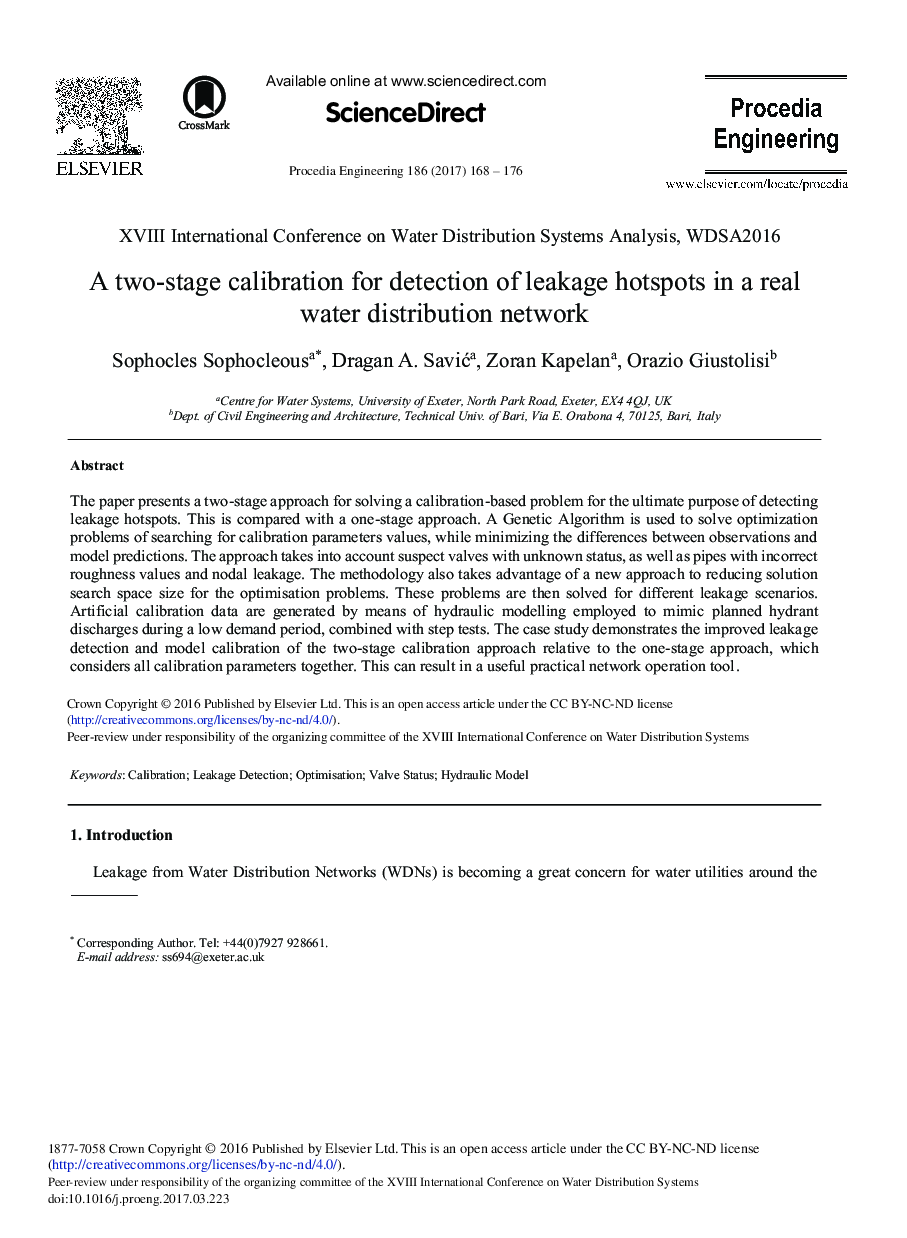| Article ID | Journal | Published Year | Pages | File Type |
|---|---|---|---|---|
| 5028205 | Procedia Engineering | 2017 | 9 Pages |
Abstract
The paper presents a two-stage approach for solving a calibration-based problem for the ultimate purpose of detecting leakage hotspots. This is compared with a one-stage approach. A Genetic Algorithm is used to solve optimization problems of searching for calibration parameters values, while minimizing the differences between observations and model predictions. The approach takes into account suspect valves with unknown status, as well as pipes with incorrect roughness values and nodal leakage. The methodology also takes advantage of a new approach to reducing solution search space size for the optimisation problems. These problems are then solved for different leakage scenarios. Artificial calibration data are generated by means of hydraulic modelling employed to mimic planned hydrant discharges during a low demand period, combined with step tests. The case study demonstrates the improved leakage detection and model calibration of the two-stage calibration approach relative to the one-stage approach, which considers all calibration parameters together. This can result in a useful practical network operation tool.
Related Topics
Physical Sciences and Engineering
Engineering
Engineering (General)
Authors
Sophocles Sophocleous, Dragan A. SaviÄ, Zoran Kapelan, Orazio Giustolisi,
